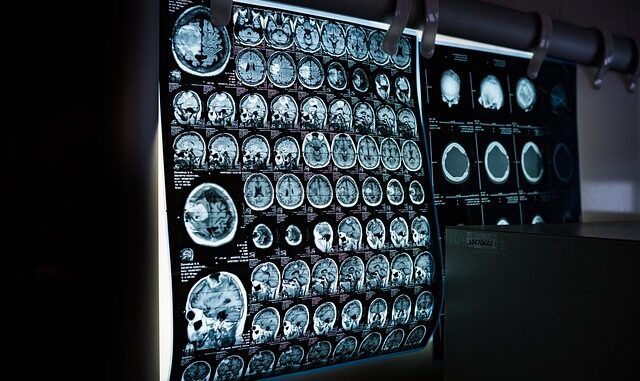
Summary
This article explores five key ways artificial intelligence (AI) is transforming medical education, from virtual patient simulations and personalized learning platforms to intelligent tutoring systems and AI-assisted medical imaging analysis. These advancements empower students with enhanced clinical judgment, personalized learning experiences, and improved diagnostic skills, ultimately shaping the future of healthcare. As AI continues to evolve, its integration into medical education promises even more innovative and impactful applications.
** Main Story**
AI is making waves across pretty much every industry these days, and medical education is no exception. Honestly, it’s not just about hype; AI really does offer some incredible opportunities to revamp how future healthcare pros learn. A big part of this shift is realizing that, moving forward, doctors and nurses will absolutely have to work hand-in-hand with AI-powered systems. And who knows? As AI gets even more sophisticated, I bet we’ll see even more mind-blowing ways for students to get practical experience and those ‘aha!’ moments through it.
Already, we’re seeing AI making some serious improvements in medical education.
1. Virtual Patient Encounters: Level Up Your Confidence
Think about this: AI-powered virtual patient simulators are a massive leap forward. These aren’t your old-school mannequins. They use machine learning and natural language processing to create lifelike, interactive patients. Students get to diagnose and treat these virtual patients who show up with all sorts of symptoms and conditions, it’s really like a serious video game. This tech builds clinical judgment and decision-making skills, all in a safe, controlled environment. You can practice over and over, honing your skills without any risk to real people. Plus, you’re exposed to a wider range of medical conditions than you might typically see during your rotations. I remember my first time using one – I completely missed a subtle sign, but the simulator walked me through it. That kind of immediate feedback is invaluable.
2. Tailored Learning Journeys: Education That Gets You
AI algorithms are making personalized education a reality. It’s about time, right? These systems analyze how you learn, figure out your strengths and weaknesses, and then suggest learning resources tailored just for you. Platforms like Lecturio and Amboss are already doing this, creating personalized learning paths for students in medicine, nursing, even veterinary studies. They serve up customized notes, quizzes, and study materials designed to target what you specifically need. For instance, if you’re a nursing student struggling with pharmacology, the AI can throw focused content your way, including practice exams and review sessions. I do think that a nursing student needs to have a firm grasp of pharmacology, that much is for certain. The beauty of this system is that it can highlight weaknesses that you might not even realize you have.
3. Intelligent Tutoring Systems: Your 24/7 Study Buddy
AI-based intelligent tutoring systems (ITSs) offer students personalized and interactive learning experiences. Using natural language processing, these systems understand your questions and deliver contextually relevant answers, but it is more than just having all the answers. ITSs can explain complex stuff, suggest study strategies, and even engage in Socratic dialogues, which is important for encouraging those critical thinking skills that are so crucial. I can see how this tailored approach enhances understanding and knowledge retention, creating a more engaging and effective learning environment.
4. Medical Imaging Analysis: Sharpening Your Diagnostic Eye
AI is changing how medical students interpret diagnostic images, that’s for sure. Machine learning algorithms highlight significant anatomical structures and potential abnormalities in X-rays, MRIs, and CT scans. I had a friend in radiology residency who said these tools are like having a second pair of eyes, sometimes catching things even the most experienced radiologists might miss. AI tools also generate diverse sample images showcasing various conditions, giving students broader exposure to different pathologies, and sharpening their diagnostic skills. The feedback and guidance from the AI really help you learn from mistakes and improve your accuracy; that said it’s important to remember that AI can make mistakes, too. We’re the ones who are ultimately responsible for our patients.
5. Improved Retention and Student Success: Data Speaks Volumes
AI-driven analytics provide insights into student performance, learning patterns, and where you might be struggling. This data allows educators to jump in and offer support, leading to better retention and student success rates. By identifying at-risk students early on, educators can provide assistance and resources to help them overcome challenges and succeed in their studies, it makes a real difference, believe me.
The Future of AI in Medical Education
These examples are just the tip of the iceberg. As AI technology keeps advancing, expect even more innovation. The future is intertwined with AI, promising a new era of enhanced learning and improved patient care. But, you know, it’s important to remember that AI is a tool, not a replacement for human interaction and critical thinking. After all, medicine is about more than just data and algorithms; it’s about empathy, compassion, and that human connection that makes all the difference to our patients. How can we ensure we never loose that connection, in pursuit of efficiency? I’m not sure I know the answer.


AI tutoring systems with Socratic dialogues? Does that mean they’ll also feign ignorance to trip me up? I hope they have a good bedside manner for when I inevitably burst into tears over biochemistry.
That’s a great point! A good “bedside manner” for AI tutors is crucial. The goal isn’t to induce tears but to offer empathetic support and guidance. Maybe future AI can even offer virtual tissues for those tough biochemistry moments! It really shows how important the human/AI interface will be.
Editor: MedTechNews.Uk
Thank you to our Sponsor Esdebe